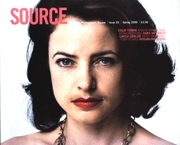EDITORIAL:
Issue 22 — Spring 2000
Issue 22 — Spring 2000
View Contents ▸
Tony O'Shea has been photographing republican commemorations, funerals and political gatherings for the last fifteen years. As a photojournalist he has covered the main events of this period producing images for the front pages of the major Dublin newspapers. John Mullin, the Ireland correspondent for The Guardian introduces this more intimate view of republicanism.
The main objective of Irish republicans is, according to Sinn Féin, 'an end to partition which is the cause of conflict, injustice and division in Ireland...' so in Ireland the border between North and South is still very much contested. In much of Europe the importance of borders appears to be diminishing. The European border posts in Dara McGrath's photographs provide a distraction for tourists as much as an ideological battle ground. In an accompanying text Colm Tóibín recalls some of the stories associated with European borders and gives an account of his own experiences at border crossings.
A theme in this issue is the relationship between literature and photography. Aidan Mathews draws upon a broad range of reference, from the Scriptures to Diane Arbus, to ask whether it is images or language that have primacy in Western culture. Rosamund Moon looks at the evolution of the language we use to discuss photography. This language appears to have coalesced from many pre-existent concepts as if, linguistically at least, the invention of photography was bound to occur. Both writers reinforce the idea that photography, a modern invention, is deeply rooted in the traditions of Western culture.
Both Trish Morrissey and David Robinson have produced a series of portraits; one of amateur golfers and the other of women with facial hair. Evident in these pictures, in different ways, is the effort we expend to present ourselves to the world. Here this is apparent in the 'normality' of golfing fashion and the transgression of women with moustaches.
The Irish artist James Coleman has his latest work, exhibited in New York, reviewed by Karen Van Meenen, the editor of Afterimage. Siún Hanrahan reviews an exhibition in Cork featuring American artist David Philips and Irish adist Paul Rowley who have been nominated for the Glenn Dimplex Award at the Irish Museum of Modem Art.
And finally, Creative Camera,whose history is reviewed here by Fiona Kearney, has decided to recreate itself as DPict. Creative Camera is dead, long live DPict.
— Editors





